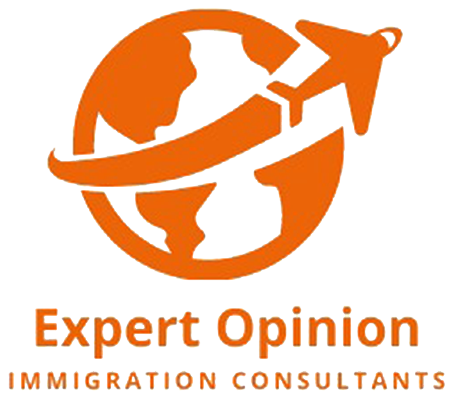Family Immigration to Australia from Pakistan - Complete Guide
Australia Family Immigration From Pakistan

Are you thinking of relocating to Australia with your family? Australia, with its sunny weather, beautiful views, and varied groups of people, could be an ideal spot to bring everyone together.
For families from Pakistan, Australia offers a special chance. The number of people born in Pakistan and living in Australia has grown a lot in recent years. This means a welcoming community is there. Not only will you join your loved ones, but you may also connect with many other Pakistanis.
Australia Family and Relative Visa Types
Australia offers a range of visa options for those seeking to join family members residing in the country. Let’s delve into the most common family and relative visa subclasses:
Partner Visas (Subclasses 100, 300, 801, 820):
These visas are for those in a committed relationship with an Australian citizen, permanent resident, or eligible New Zealand citizen. Options include prospective marriage visas and temporary and permanent partner visas.
Child Visas (Subclasses 101, 143, 445, 802):
Designed for dependent children of Australian citizens, permanent residents, or eligible New Zealand citizens.
Parent Visas (Subclasses 103, 143, 804, 864):
Allow parents of Australian citizens or permanent residents to migrate to Australia permanently or for a temporary stay.
Remaining Relative Visas (Subclass 115, 835):
For orphaned or single dependent grandchildren who have no parent or legal guardian in their home country.
Carer Visas (Subclass 116, 836):
Grants permanent or temporary residency for those who provide full-time care and support to a close relative with a permanent disability.
Other Family Visas:
Additional options include Adoption Visas (Subclass 102, 802) for adopted children and Aged Dependent Relative Visas (Subclass 114, 838) for specific situations.
It’s crucial to choose the most appropriate visa subclass based on your specific circumstances. A licensed immigration professional can offer valuable guidance in navigating this process.
Offshore and Onshore Application Process for Australian Family Immigration
Australian family and relative immigration applications can be lodged either offshore (from your home country) or onshore (once you’ve entered Australia on another visa).
Offshore Application Process for Australian Family Immigration:
- Start by checking if you qualify for the family visa category you want. For example, a partner visa (Subclass 309/100) or a parent visa (Subclass 103). Know the requirements.
- Gather all needed papers like ID proof, relationship proof, health records, police clearance, and sponsor information. Collect these documents.
- Apply online via the Department of Home Affairs website. Or mail your application to the visa processing center they specify.
- If asked, give biometrics like fingerprints and undergo medical tests as per their guidelines.
- Wait while your application is processed. This can take months or years, based on your visa type and situation.
- The Department will make a decision on your visa. If approved, they’ll guide you on the next steps to get the visa and enter Australia.
Onshore Application Process for Australian Family Immigration:
- First, find out which family visa type fits your situation, like a partner visa or a child visa.
- Next, collect all the documents needed, such as identification proof, evidence of your relationship, health check reports, character documents, and details about your sponsor.
- Then, submit your visa application either online through the government website or by mail to the designated processing center.
- If you qualify, apply for a bridging visa to legally stay in Australia while your application is being processed.
- Be ready to attend any interviews or provide extra information if asked by the department during the processing of your application.
- Finally, wait patiently for the decision on your visa application, which could take several months depending on the visa type and your specific circumstances.
- Receive a decision on your visa application from the Department of Home Affairs. If approved, follow the instructions for the visa grant and any conditions attached to your visa.
Australia Family and Relative Visa Fees
When you want to bring your family members to Australia, there are certain costs involved. These costs depend on the specific visa you are applying for. Let’s take a look at some common fees (these fees may change):
- Visa Application Charge: This charge can be anywhere between AUD$700 and AUD$4,000+, depending on the type of visa you are applying for.
- Health Checks: You and your family members will need to undergo medical examinations. These examinations usually cost around AUD$300-AUD$500 per person.
- Police Checks: You will need to get police clearances from your home country and sometimes from Australia as well. The cost for these clearances can range from AUD$50 to AUD$200+.
- Biometric Data Collection: You may also need to provide your fingerprints and facial recognition scans. This typically costs around AUD$100.
Additional Costs: Translation fees, professional assistance, and character references may incur further expenses.
Australia Family and Relative Visa Processing Times
Family visas often take months to process in Australia. The wait differs by visa type. Some common visa timelines: Partner visas, around 12-16 months from Australia or 15-28 months from outside. Parent visas, around 30 months. Child visas, usually 13-26 months. Still, times vary based on caseloads and details. These are just general estimates that can change:
- Partner Visas: Can range from 6 months to 2+ years.
- Child Visas: Processing times can be as quick as a few weeks or take several months.
- Parent Visas: Generally have the longest processing times, often exceeding 2 years.
Tips for Faster Processing:
- Complete applications accurately and provide all requested documentation.
- Engage a registered migration agent for expert guidance.
- Respond promptly to any requests for additional information from the Department of Home Affairs.
By following these tips, you can potentially streamline the processing of your Australian family and relative visa application.
Australia Family and Relative Visa Requirements
To be eligible for an Australia family and relative visa, you’ll need to meet specific requirements set by the Department of Home Affairs. These requirements can vary depending on the visa subclass, but some general ones include:
- Relationship: You must have a genuine and ongoing relationship with your sponsoring family member in Australia.
- Health: You and any dependants applying with you must meet the department’s health requirements. This typically involves medical examinations by designated medical practitioners.
- Character: You must pass a character assessment, demonstrating a good criminal history and no risk to the Australian community. Police checks from your home country and sometimes Australia are mandatory.
- Financial Capacity: For some visa subclasses, you may need to demonstrate sufficient financial resources to support yourself and your dependents upon arrival in Australia.
- English Language Skills: Meeting a minimum English language proficiency score may be a requirement for some visa subclasses.
Additional Requirements:
- Age Requirements: Certain visa subclasses have specific age limitations for applicants and sponsors.
- Balance of Family Test: This assessment evaluates the strength of your family ties in Australia compared to those in your home country. It’s particularly important for parent visas.
- Assurance of Support (AOS): For some parent visas, you may be required to have your sponsoring child sign an AOS document, guaranteeing financial support for a specific period.
Next Steps for a Successful Australian Family and Relative Immigration Process
Here are some key steps to take on your path to Australian family and relative immigration:
- Pick the right visa option: Look at your situation and relationship with your family member in Australia. Choose the best visa type for you.
- Get documents ready: Start gathering important papers like birth certificates, marriage paperwork, police checks, and financial records.
- Meet health and character rules: Schedule medical exams and get police clearances if needed for your visa type.
- Apply carefully: Fill out the visa application form correctly. Give accurate details and supporting documents.
- Ask for help if needed: An expert migration agent can guide you through the process. They know Australian family and relative visas well.
- Stay updated: Check the Home Affairs website often for new visa info and processing times.
By following these steps and remaining patient throughout the process, you can significantly increase your chances of a successful Australian family and relative immigration experience.
Additional Considerations for a Smooth Transition
While visa approval is a significant milestone, here are some additional considerations to ensure a smooth transition to life in Australia:
- Pre-Departure Planning: Research housing options, healthcare systems, education opportunities, and job prospects in your chosen Australian city or region.
- Cost of Living: Australia has a higher cost of living compared to many other countries. Plan your finances accordingly to cover expenses like rent, utilities, and groceries.
- Cultural Integration: Embrace the vibrant multicultural society of Australia. Learning basic Australian phrases and customs can ease the transition.
- Building a Support Network: Connect with your sponsoring family member and explore community resources to build a support network in your new home.
Let's Connect !
Feel free to take the first step towards your visa success story. Reach out, and let’s set off on this journey together!
